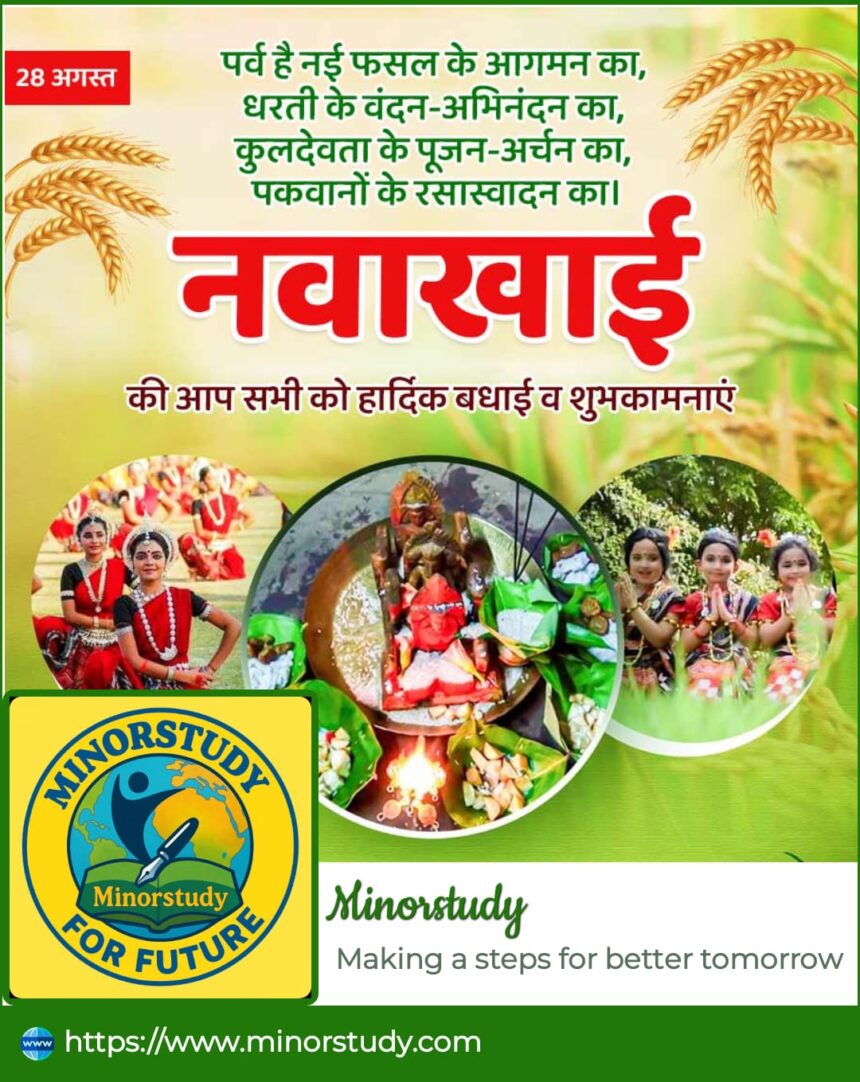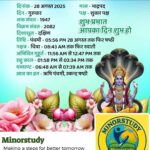Introduction
Festivals in India are not just about rituals; they are about emotions, heritage, gratitude, and the rhythm of life. Among the many harvest festivals of India, Navakhai (or Nuakhai) holds a very special place in the state of Odisha and its neighboring regions.
- Introduction
- History of Navakhai Festival
- Timeline of Navakhai
- Significance of Navakhai
- Observance of Navakhai Festival
- Daily Life Impacts of Navakhai
- 9 Incredible Reasons Why Navakhai Inspires Society
- Interesting Facts about Navakhai
- FAQs About Navakhai Festival
- Navakhai’s Importance in Our Life and Society
- Wishing on Navakhai
- Conclusion
The word “Nua” means new and “Khai” means food or eating. Together, Navakhai literally means “eating of the new crop”. It is celebrated to welcome the newly harvested rice, to honor Mother Earth, to worship the family deity, and to strengthen family and community bonds.
Unlike festivals centered around grandeur, Navakhai is deeply rooted in simplicity, gratitude, and the connection between humans and nature. In this article, we will dive deep into its history, timeline, significance, observance, facts, FAQs, importance in life, and daily life impacts—all in a human-friendly way.
History of Navakhai Festival
Agricultural Roots: Navakhai is an agrarian festival, mainly celebrated in Western Odisha, Chhattisgarh, and parts of Jharkhand. It dates back several centuries when agriculture was the main livelihood. Farmers believed that offering the first harvest to their deity was a way to show gratitude for nature’s blessings.
Mythological Connection: Ancient scriptures describe rituals of offering the first grain to gods and ancestors. This ensured that the divine blessings would continue for the coming year.
Cultural Heritage: Historical records show that Navakhai has been celebrated since the time of tribal kings and local rulers. It was not just a religious practice but also a cultural and social event to unite communities after the hard work of the harvest.
Modern Adaptation: While it still retains its rural roots, today Navakhai has become a symbol of Odia identity, celebrated not only in villages but also in cities and even abroad by Odia communities.
Timeline of Navakhai
Vedic Age – Rituals of offering first harvest mentioned in scriptures.
Medieval Era – Kings and tribal leaders institutionalized Nuakhai celebrations.
Pre-Independence – The festival remained a rural tradition tied to farming cycles.
Post-Independence – Navakhai gained recognition as a major cultural festival of Odisha.
Present Day – Celebrated worldwide by Odia diaspora, blending tradition with modern eco-friendly practices.
Significance of Navakhai
Navakhai is more than just a harvest festival. Its multi-dimensional significance includes:
Agricultural Gratitude – Farmers express thanks for the new crops.
Spiritual Devotion – The first rice is offered to the family deity, ancestors, and Mother Earth.
Cultural Identity – A festival that strengthens Odia pride and rural traditions.
Family Bonding – Families gather to share meals, rituals, and blessings.
Community Unity – Entire villages come together, putting aside differences.
Economic Importance – Local markets thrive with sales of new grains, clothes, and sweets.
Environmental Awareness – Reminds us of our bond with nature and the importance of sustainable farming.
Observance of Navakhai Festival
The celebration usually follows these rituals:
Preparation (Panchuka) – Families clean homes, buy new clothes, and prepare for the rituals.
Offering (Nua Dhora) – The newly harvested rice is cooked and offered first to the family deity and ancestors.
Community Meals – Families then eat the new rice together in a symbolic gesture of unity.
Traditional Dishes – Special foods like Arisa Pitha, Manda Pitha, Kheeri, and rice dishes are prepared.
Cultural Programs – Folk songs, dances, and community gatherings mark the festival.
Blessings – Elders bless the younger generation, strengthening family ties.
Daily Life Impacts of Navakhai
Teaches Gratitude – Reminds us to be thankful for food and nature.
Strengthens Family Bonds – Families celebrate together, bridging generations.
Encourages Sustainability – Focuses on natural farming and seasonal eating.
Brings Happiness – Eating new harvest food brings a sense of prosperity.
Spiritual Growth – Offering to deities and ancestors enhances devotion.
9 Incredible Reasons Why Navakhai Inspires Society
Gratitude to Nature – Teaches respect for the environment.
Preserves Culture – Keeps tribal and Odia traditions alive.
Promotes Unity – Families and communities celebrate together.
Boosts Economy – Helps farmers and small businesses thrive.
Encourages Simplicity – A festival focused on food, family, and gratitude.
Strengthens Faith – Rituals instill devotion and humility.
Cultural Expression – Folk dances and music reflect heritage.
Promotes Sustainability – Reminds us of organic, seasonal lifestyles.
Spreads Happiness – Symbolizes prosperity, joy, and positivity.
Interesting Facts about Navakhai
It is also called Nuakhai Parab in Odisha.
Celebrated mainly in Western Odisha districts like Sambalpur, Bargarh, Balangir, and Kalahandi.
The festival usually falls on the day after Ganesh Chaturthi (in August/September).
Nuakhai Juhar – a special form of greeting where younger people bow before elders for blessings.
It is often compared to Thanksgiving in the West, as both celebrate harvest and gratitude.
FAQs About Navakhai Festival
Q1: When is Navakhai celebrated?
It is usually observed a day after Ganesh Chaturthi in August or September.
Q2: What does Navakhai mean?
Nua means new and Khai means food—together it means “eating of the new crop.”
Q3: Which states celebrate Navakhai?
Primarily Odisha, but also Chhattisgarh, Jharkhand, and among Odia communities worldwide.
Q4: Is Navakhai similar to Thanksgiving?
Yes, both are harvest festivals centered around gratitude, food, and family.
Q5: What is the main ritual of Navakhai?
Offering the first rice from the new harvest to the family deity and ancestors.
Navakhai’s Importance in Our Life and Society
Navakhai is important because it:
Connects us to our roots and traditions.
Reminds us of the value of food and farmers.
Encourages family unity in modern fast-paced life.
Strengthens community harmony.
Inspires a sustainable way of living.
Wishing on Navakhai
🌾 “On this Navakhai, may the blessings of Mother Earth and your family deity bring you abundance, health, and happiness. Let us welcome the new harvest with gratitude and joy!” 🌾
Conclusion
Navakhai, or Nuakhai, is not just a festival—it’s a celebration of life, food, and gratitude. It brings together family, community, and culture while reminding us of the timeless bond between humans and nature.
From its ancient agricultural roots to its modern global celebrations, Navakhai continues to inspire unity, joy, and sustainability. In a world rushing towards materialism, this festival teaches us the value of simplicity, thankfulness, and togetherness.
So, this year, when you bow before your elders and share the first bite of the new harvest, remember—you are part of a tradition that has nourished generations with faith, culture, and prosperity.
Happy Navakhai to You and Your Family!








